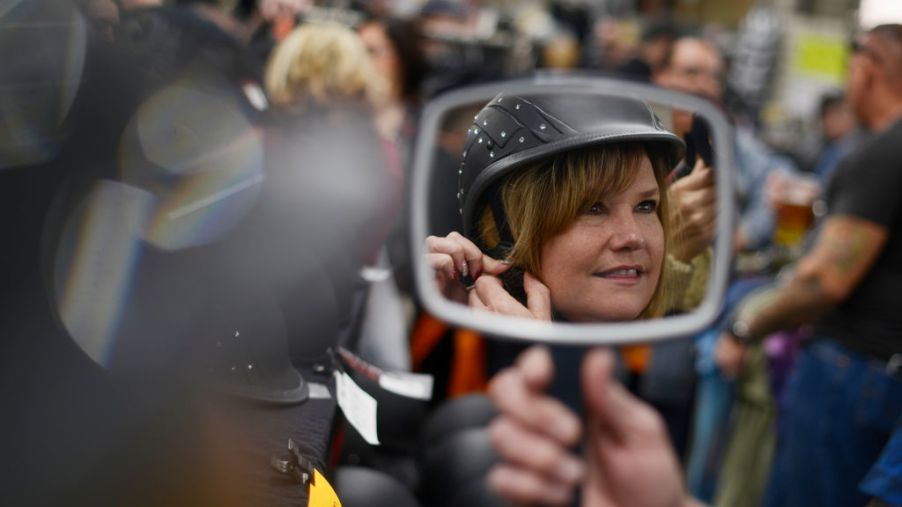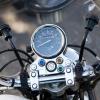
‘Loud Pipes Save Lives’ and Other Foolish Motorcycle Safety Myths
Even the most seasoned bikers must take certain steps to ensure they have a safe and fun ride. There are, however, many myths surrounding motorcycle safety. To help you stay safe on two wheels, we’ll debunk eight of the most foolish motorcycle safety myths.
Myth: Loud pipes save lives
Just because something is louder doesn’t mean it’s safer. Many people believe that “loud pipes save lives” because the increased noise alerts drivers and increases awareness of the rider. But the sound your motorcycle makes will be heard behind you, not in front of you; you’re really not alerting anyone that you’re coming. It’s much safer for you to be seen than heard.
Myth: Motorcycle gear is just for appearances
Yes, motorcycle gear certainly looks cool. But the leather, gloves, boots, and helmets all serve a purpose. According to the Huffington Post, leather is resistant to abrasion and protects riders against cuts and scrapes. The gear and gloves are good insulators that shield you from the wind. Boots protect your feet in a crash but also against potentially dangerous parts on your bike.
Myth: Skilled riders can handle anything
A beginner rider and one who has been riding for a lifetime are equally as likely to be involved in a crash. According to Motorcycle Cruiser, “No matter how skilled you are, it’s better to ride to avoid situations that can turn ugly.” Superior skills and years of experience do not mean much when a car pulls out in front of you or you’re blindsided by another driver. Every biker, no matter the skill level, should ride with caution.
Myth: Helmets can break your neck or leave you brain damaged
Some people truly believe that wearing a helmet hurts more than it helps. The myth that, in an accident, a helmet can hurt your neck or leave you brain-damaged is simply untrue. In fact, the Motorcycle Safety Foundation states that “the critical importance of a helmet has been confirmed by laboratory tests and decades of crash studies.” A helmet is proven to reduce the risk of neck and head injuries by up to 67% and the risk of death by up to 37%.
Myth: Slower streets equal safer streets
There’s a common misconception that streets or residential roads are safer than highways and interstates. But this is not true. Slower speeds don’t always mean safer streets.
In fact, you’re less likely to experience an accident on the highway, where traffic is moving in one direction. On normal streets, riders must contend with traffic lights, pedestrians, cross-traffic, and more. While speed does matter if you crash, higher speeds don’t make you more likely to experience a crash.
Myth: You should ‘lay down’ your bike in a crash
According to MotorBike Writer, even the police learn how to “lay down” a motorcycle, which involves purposely laying down your bike in anticipation of a crash. The myth is that this will slow you faster and avoid a possibly horrific crash. But laying down your bike when you think you’re about to crash will actually force you to slide a lot farther than you anticipate — all while crushing plastic, metal, and your body against the road.
If you anticipate a crash and need to stop quickly, you should brake hard and leave your bike upright as much as possible. After all, you’ll get better traction with your rubber against the road.
Myth: Helmets hinder your sight and hearing
Because a good motorcycle helmet sits firmly on your head, there is a common misconception that a helmet reduces the amount you can see and hear. Without optimal sight and hearing, you may be more likely to crash. But helmets are designed to reduce wind and engine noise without affecting your ability to hear traffic. Helmets are required to allow you at least 105 degrees of peripheral vision on each side. It also provides general protection for your eyes and ears.
Myth: Every driver can see you clearly
Many bikers will hop on a motorcycle and assume they are safe. But unlike a car, you and your motorcycle need to work to maintain visibility. No rider should assume that every driver can see them clearly. This means wearing protective clothing, using your lights, and practicing defensive driving skills. You should approach every situation cautiously and maintain healthy distances from other vehicles.


